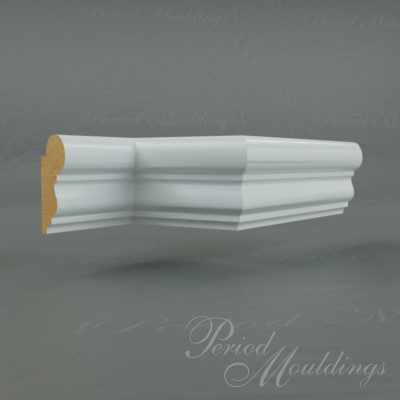When you have the luxury of choosing a skirting board that isn’t too dependent on style, the material is the next most significant factor to decide upon. In a new-build or a more contemporary home, skirting can be chosen with a little more free reign, as the style will not be so critical in terms of matching the room. But like anything else, there are so many options available today, that choosing a simple skirting board material is not as straightforward as you might think.
What types of wood are available for skirting?
We can now look at more common skirting types and their properties to help you make a considered choice. MDF is often a popular choice in newer properties, but it can be somewhat featureless and can damage easily. It is generally considered a cheaper, ‘budget’ option, which is why we don’t supply any of our skirting boards in this material and instead opt for more quality craftsmanship.

After this, the choice generally comes down to hard or soft wood options. Softwood skirting is very adaptable as it can be varnished and sanded down to re-paint very easily. Hence it tends to last longer in a house, as it doesn’t need replacing and is simply re-painted. Hardwood, as the name suggests, is more resilient to damage and is also usually more expensive as a result.
Here we look at the four skirting board woods we recommend for your property:
Pine (softwood): This is the only softwood on the list. It is very popular as a material in the home, as it is used for making doors, windows and furniture. It is inexpensive and readily available. Softwoods come from coniferous trees and tend to be cheaper than hardwoods because the trees grow straighter and faster and account for approximately 80% of the world’s timber production. Sold in standard thickness and width, it is ideal for skirting as it is adaptable and easy to fit and paint or varnish.
Tulipwood (hardwood): Tulipwood is found largely in the US where it is known as the Yellow poplar or the Tulip poplar. A medium density wood it is versatile for bending and shock resistance and is often used in construction, furniture, interior joinery, kitchen cabinets and of course mouldings.
Sapele (hardwood): This is found in large parts of East and West Africa and comes from a very large tree that can grow up to 45 metres. It is harder and heavier than African mahogany and has a cedar-like scent when cut. It is equal to oak in terms of a resistance to indentation, bending strength and stiffness and takes screws, nails and glue well, in addition to providing a very attractive polish finish.
Oak (hardwood): Oak wood is derived from the oak tree, which prevails in the northern hemisphere, with 90 species alone found in North America. Oak wood is strong and durable with an attractive light colour and prominent grain. It feels hard and smooth which is ideal for skirting, so it provides a strong and elegant finish, particularly if varnished to bring out its natural features.
All our skirting board styles are available in these choice of woods, and you can speak to our team to discuss the specific suitability of each type for either the traditional or contemporary style of skirting boards that we stock.

